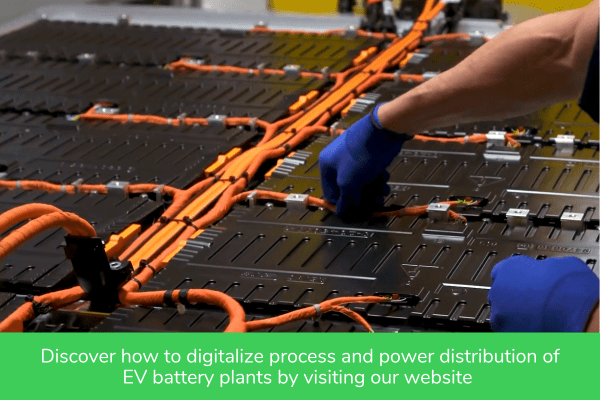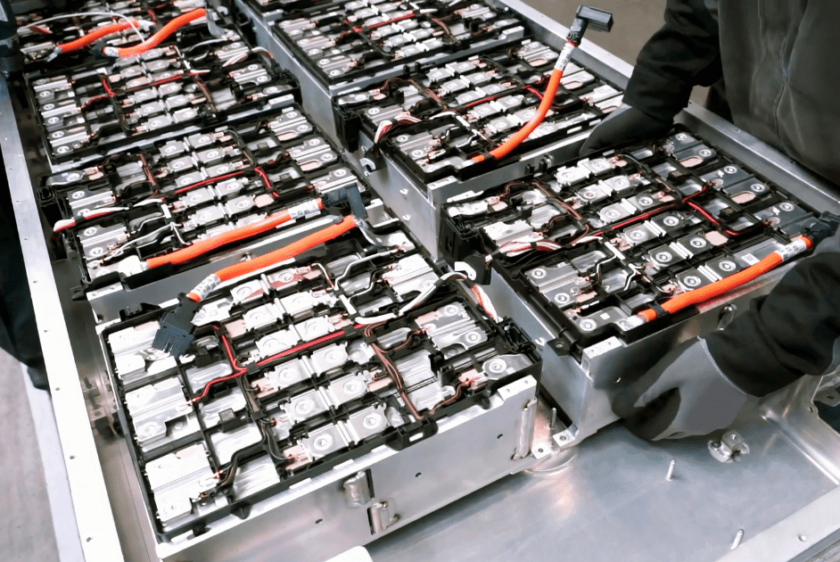This audio was created using Microsoft Azure Speech Services
EV battery plants must lower their CO2 emissions to meet green ambitions
The automotive industry is a major contributor to the global GHG emissions crisis. Electric vehicle adoption has been swiftly accelerating as a solution for reducing road transportation’s carbon footprint. However, while EVs may be a form of green mobility, EV battery plants (EVBP) still need to significantly reduce their CO2 emissions.
EV battery manufacturing and vehicle production are highly energy intensive, with controversies related to cradle-to-grave overall C02 emissions. By decarbonizing EV battery manufacturing, EVBPs will reduce their own emissions while also differentiating themselves as a green option for OEM car makers and EV buyers. Nearly all automotive OEMs have made bold pledges to improve sustainability, including goals such as achieving carbon reduction across their entire fleets.
Here are 6 actions EV battery plants can take to decarbonize
#1 Electrify industrial processes for green, optimized EV battery performance
Electric vehicle battery production is carbon intensive – accounting for between 40 percent to 60 percent of EVs’ total production emissions. EVBPs can reduce their carbon footprint by electrifying processes and equipment – powering them with low-carbon or decarbonized electricity instead of fossil fuels. For example, they can transition from gas to electric on the coating and drying process and on dry and clean rooms. Electrification can also increase energy performance by more than 10 percent.
#2 Use technology to increase energy efficiencies that improve sustainability and cut energy costs
Improving energy efficiency is a cost-effective way for EVBPs to reduce GHG emissions. It is good for the environment and also for the bottom line because using less energy saves money.
Energy efficiency can be increased using software and analytics that monitor EVBPs’ energy consumption. EcoStruxure Power Monitoring, an ISO 50001 compliant software, accurately assesses and determines how much energy, water, and other utilities are being consumed by different processes and areas in the EVBP. This information is used to optimize operational and energy efficiencies. For example, it can pinpoint energy inefficient systems, identify areas for maintenance to improve energy use, monitor energy consumption, and provide trends and reports on EV battery plants’ energy efficiency.
Moreover, by utilizing direct current (DC) solutions directly in the formation process, manufacturers can bypass the need to convert alternating current (AC) to DC, which is typically required several times in the process. This change can lead to improved energy efficiency and reduced power losses associated with conversion. DC Systems by Schneider Electric offer a comprehensive solution.
Leveraging technology and IIoT, EV battery manufacturers can forecast a plant’s total energy usage and utilize on-site distributed energy resources like battery energy storage systems. This offers the flexibility to aid the grid and utilities by curbing consumption during peak periods, contributing to sustainable energy practices.
#3 Decarbonize the energy mix with cost-effective renewable energy procurement solutions
EVBPs can improve sustainability by producing batteries using green, renewable-based power instead of fossil fuels.
There are 3 main ways to purchase renewable energy:
- Energy attribution certificates (EAC) – Buyers can purchase energy attribution certificates to support carbon emissions reductions’ claims. The certificate is tradeable and guarantees that one MWh of electricity has been produced from renewable energy sources.
- On-site/distributed generation – EVBPs can generate and store green power on site using technology like solar panels and microgrids.
- Off-site generation – EVBPs can also purchase green power that has been generated off site. Power purchase agreements (virtual, direct, and retail) are the primary mechanism for off-site generation.

#4 Reduce scope 3 upstream and downstream emissions by adopting supplier engagement programs for decarbonization
Reducing scope 3 emissions – which are outside EVBPs’ direct control – is important for improving sustainability because the majority of businesses’ carbon emissions come from scope 3. A supplier engagement program can help decarbonize scope 3 emissions in EVBPs’ supply chain. This type of program could leverage CONNECT, an Industrial Intelligent Platform to model and measure resource use and supports suppliers’ decarbonization initiatives. It can be tailored to suppliers’ varying characteristics (maturity, CO2 intensity, etc.) and be used to educate, enable, and engage suppliers.
Moreover, CONNECT provides EVBPs with the essential tools needed to meet the digital battery passport’s requirements. It promotes transparency, interoperability, and collaboration among all value chain stakeholders, supporting the goal of a circular economy. Serving as a unified point of reference, it connects diverse ecosystems and ensures a single, reliable source of information.
#5 Reduce waste through improved process efficiency and battery traceability
Around 20 percent of scrap comes from mixing to pack assembly in an average gigafactory. This can be reduced by improving production and process traceability.
By leveraging battery traceability and modeling production and process steps through a digital platform, EV battery manufacturers can proactively understand and address deviations at early stages using machine learning, thereby reducing scrap. This not only aligns with lean principles by mitigating the eight main wastes but also lowers energy consumption per kilowatt-hour of each cell produced, leading to a more sustainable production process.
#6 Reduce CO2 emissions using SF6-free switchgear and asset management solutions
Switching from traditional SF6-insulated switchgear to SF6-free alternatives like Schneider Electric’s SM AirSeT can contribute to Scope 1 CO2 reduction by eliminating the direct greenhouse gas emissions associated with SF6. By adopting SF6-free solutions, EV battery manufacturers can significantly reduce their direct emissions, thereby positively impacting their Scope 1 CO2 footprint. This transition aligns with sustainability goals and supports efforts to mitigate climate change.
In addition, asset management that leverages predictive, condition-based maintenance (CBM) can reduce EVBP’s carbon footprint by optimizing equipment’s health and EV battery performance. This proactive maintenance strategy can extend equipment’s lifespan, which delays equipment replacement and the replacement’s environmental impact (energy use in production and transportation, raw mineral extraction, disposal of obsolete equipment, etc.).
CBM uses connected technology and data analytics to manage equipment’s health by predicting and planning maintenance needs based on data about assets’ and processes’ health. EcoCare by Schneider Electric utilizes cutting-edge technology like Asset Advisor and Power Advisor, supported by the expertise of subject matter experts, to proactively extend the remaining useful life of assets.
Learn more about how EV battery plants can decarbonize
Visit our website for more details on how EVBPs can reduce their carbon footprint.



